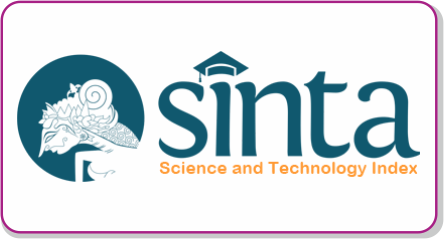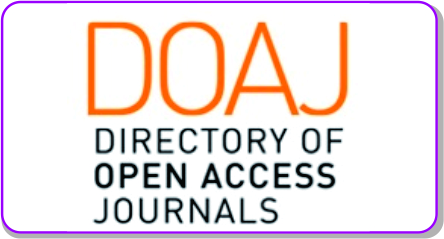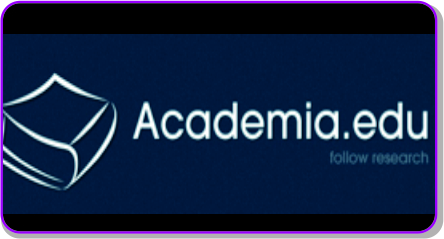The Effectiveness of the Hadtissoft Application in Learning Hadith at the Department of Hadith Studies, UIN Sayyid Ali Rahmatullah Tulungagung
DOI:
https://doi.org/10.30983/it.v7i2.6981Keywords:
HaditsSoft, Ilmu Hadis, Pembelajaran, EfektivitasAbstract
Abstract
Currently, technology is always evolving. With the development of technology, all education must be able to keep up with its development. Especially the Department of Hadith. In education in the Department of Hadith Science, the text of the hadith can't change, because the text of the hadith must be connected to the Prophet Muhammad. But even so, the texts of the hadith are in various books. So the theory of digitization of hadith emerged, where the digitization of hadith is very necessary to maintain the trend of hadith in this era. This article focuses on one application called HaditsSoft. The important question emerges regarding this issue. Do students agree that the HaditsSoft application is effective in its use as it can be used easily, quickly, and accurately. With this question, researchers found that student of Hadith studies at State Islamic University Sayyid Ali Rahmatullah are already familiar with the application. This study also found that from 13 respondents, nine people (69,2%) said they agree with the easiness and speed of HaditsSoft, four person (30,8%) really agree. Meanwhile, there are eight person (around 61,5%) agree enough with the text accuracy of HaditsSoft application.
Â
Dalam pergolakan zaman saat ini, teknologi selalu berevolusi. Dengan berkembangnya teknologi membuat seluruh pendidikan harus dapat mengikuti perkembangannya. Khususnya jurusan Ilmu Hadis. Dalam pendidikan di jurusan Ilmu Hadis tidak mungkin teks hadis berubah-ubah, karena teks hadis harus tersambung kepada Nabi Muhammad. Namun walaupun demikian teks-teks hadis tersebut berada di berbagai kitab. Sehingga muncullah teori digitalisasi hadis, di mana digitalisasi hadis ini sangat diperlukan untuk menjaga tren hadis di zaman sekarang. Dalam artikel ini peneliti memfokuskan ke dalam satu aplikasi HaditsSoft. Oleh karena itu peneliti menemukan beberapa pertanyaan yang menjadi langkah awal dalam penelitian ini yakni, Setujukah bahwa aplikasi HaditsSoft efektif dalam penggunaannya seperti dapat digunakan dengan mudah, cepat, dan akurat? Dengan pertanyaan-pertanyaan tersebut peneliti mendapatkan hasil bahwa mahasiswa Ilmu Hadis Universitas Islam Negeri Sayyid Ali Rahmatullah sudah mengenal aplikasi-aplikasi hadis tersebut, tentunya aplikasi HaditsSoft. Juga aplikasi HaditsSoft cukup efektif dalam membantu perkembangan pembelajaran di jurusan Ilmu Hadis Universitas Islam Negeri Sayyid Ali Rahmatullah Tulungagung. Di mana dari 13 responden yang telah dipastikan pernah menggunakan aplikasi HaditsSoft mengatakan bahwa 9 (69,2%) orang di antaranya mengatakan sangat setuju dengan kemudahan dan kecepatan aplikasi HaditsSoft, dan 4 (30,8%) di antaranya mengatakan sangat setuju dan 8 (61,5%) memngatakan cukup setuju dengan ketepatan teks hadis dalam dalam aplikasi HaditsSoft.References
Ahmad, Khader. “Digitalisasi Hadith di Malaysia Analisis terhadap Keperluan Kriteria Pembangunan Website dan Software Hadith,†2019, 331–52. https://www.utusan.com.my/bisnes/ekonomi/bagaimana-media-digital-memberi-.
Aji, Rustam. “Digitalisasi, Era Tantangan Media (Analisis Kritis Kesiapan Fakultas Dakwah dan Komunikasi Menyongsong Era Digital).†Islamic Communication Journal 1, no. 1 (2016): 43–54. https://doi.org/10.21580/icj.2016.1.1.1245.
Akbar, Amin, and Nia Noviani. “Tantangan dan Solusi dalam Perkembangan Teknologi Pendidikan di Indonesia.†Prosiding Seminar Nasional Pendidikan Program Pascasarjana Universitas Pgri Palembang, 2019, 18–25.
Akmaluddin, Muhammad. “Sanad Digital: Ijazah Hadis Musalsal dalam Kajian Hadis Virtual di Grup dan Halaman Facebook.†Nabawi: Journal of Hadith Studies 2, no. 1 (2021): 141–61. https://doi.org/10.55987/njhs.v2i1.44.
Ansori, Aan. “Digitalisasi Ekonomi Syariah.†Islamiconomic: Jurnal Ekonomi Keuangan Dan Bisnis Islam 7, no. 1 (2016): 1–18. https://doi.org/10.32678/ijei.v7i1.33.
Aspi, Muhammad, and Syahrani. “Profesional Guru dalam Menghadapi Tantangan Perkembangan Teknologi Pendidikan.†Adiba: journal of education 2, no. 1 (2022): 64–73.
Danuri, Muhamad. “Perkembangan dan Transformasi Teknologi Digital.†Infokam XV, no. II (2019): 116–23.
Fakhrurrazi. “Hakikat Pembelajaran Yang Efektif.†Jurnal At-Tafkir 11, no. 1 (2018): 85–99. https://doi.org/10.32505/at.v11i1.529.
Fikriyyah, Dilya Ul. “Telaah Aplikasi Hadis (Lidwa Pusaka).†Jurnal Studi Ilmu-Ilmu Al-Qur’an Dan Hadis 17, no. 2 (2016): 273–88.
Hadi, Rahmad Tri. “Studi Aplikasi Hadis Era Mobile.†Islam Transformatif : Journal of Islamic Studies 4, no. 1 (2020): 13–24. https://doi.org/10.30983/it.v4i1.2629.
Himmah, Tsania Nahdiatul, and Dyah Sitoresmi Fitri Azisi. “Pengaruh Perkembangan Teknologi Informasi terhadap Layanan Perpustakaan Iain Tulungagung.†BIBLIOTIKA : Jurnal Kajian Perpustakaan dan Informasi 3, no. 2 (2019): 123–30. http://journal2.um.ac.id/index.php/bibliotika.
Huda, Irkham Abdaul. “Perkembangan Teknologi Informasi dan Komunikasi (TIK) Terhadap Kualitas Pembelajaran di Sekolah Dasar.†Jurnal Pendidikan dan Konseling (JPDK) 2, no. 1 (2020): 121–25.
Jendri. “Pola Pemahaman Hadis Partisipan Kegiatan One Day One Hadis dalam Whatsapp.†Islam Transformatif : Journal of Islamic Studies 4, no. 1 (2020): 1–12. https://doi.org/10.30983/it.v4i1.2661.
Nurfalah, Irfan, and Aam Slamet Rusydiana. “Digitalisasi Keuangan Syariah Menuju Keuangan Inklusif: Kerangka Maqashid Syariah.†Ekspansi: Jurnal Ekonomi, Keuangan, Perbankan dan Akuntansi 11, no. 1 (2019): 55–76. https://doi.org/10.35313/ekspansi.v11i1.1205.
Rahmatullah. “Ahmad Lutfi Fathullah dan Digitalisasi Hadith di Nusantara.†Islamica: Jurnal Studi Keislaman 14, no. 2 (2020): 291–316. http://dx.doi.org/10.1016/j.ndteint.2014.07.001%0Ahttps://doi.org/10.1016/j.ndteint.2017.12.003%0Ahttp://dx.doi.org/10.1016/j.matdes.2017.02.024.
Rohimah, Afifatur. “Era Digitalisasi Media Pemasaran Online dalam Gugurnya Pasar Ritel Konvensional.†KANAL: Jurnal Ilmu Komunikasi 6, no. 2 (2018): 91–100. https://doi.org/10.21070/kanal.v6i2.1931.
Sagala, Azan. “Takhrij Hadis dan Metode-Metodenya.†Al-Ulum: Jurnal Pendidikan Islam 2, no. 2 (2021): 83–96. https://doi.org/10.30596/al-ulum.v.
Ummah, Siti Syamsiyatul. “Digitalisasi Hadis (Studi Hadis di Era Digital).†Diroyah: Jurnal Ilmu Hadis 4, no. 1 (2019): 1–10.
Yoga, Salman. “Perubahan Sosial Budaya Masyarakat Indonesia dan Perkembangan Teknologi Komunikasi.†Jurnal Al-Bayan 24, no. 1 (2018): 29–46. https://doi.org/10.22373/albayan.v24i1.3175.
Yusuf, Bistari Basuni. “Konsep Dan Indikator Pembelajaran Efektif.†Jurnal Kajian Pembelajaran Dan Keilmuan, 2017.
Downloads
Submitted
Accepted
Published
Issue
Section
License
Authors who publish with this journal agree to the following terms:
- Authors retain copyright and grant the journal right of first publication with the work simultaneously licensed under a Creative Commons Attribution-ShareAlike 4.0 International License that allows others to share the work with an acknowledgment of the work's authorship and initial publication in this journal.
- Authors are able to enter into separate, additional contractual arrangements for the non-exclusive distribution of the journal's published version of the work (e.g., post it to an institutional repository or publish it in a book), with an acknowledgment of its initial publication in this journal.
- Authors are permitted and encouraged to post their work online (e.g., in institutional repositories or on their website) prior to and during the submission process, as it can lead to productive exchanges, as well as earlier and greater citation of published work (See The Effect of Open Access).












